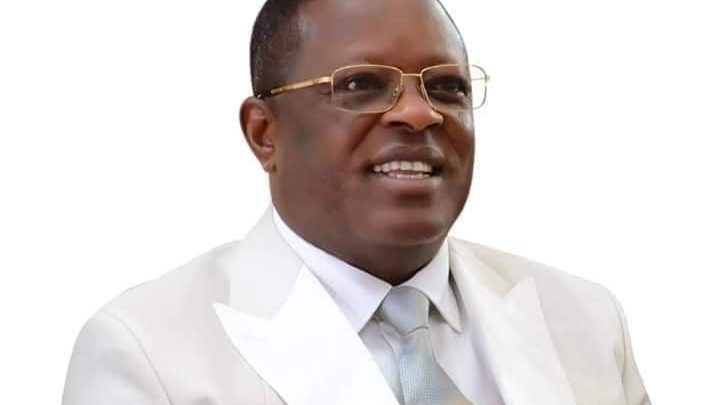Opinions
Umahi’s Dance Around the Figures: The Secrecy and Swagger Behind the Lagos–Calabar Coastal Highway

By Babs Daramola
In a democracy, public officials owe citizens not arrogance, but answers. Yet Nigeria’s Minister of Works, Dave Umahi, seems to prefer swagger to substance whenever questions arise about the Lagos–Calabar Coastal Highway -Nigeria’s costliest road project in history.
Again and again, the Minister is asked one simple question: “What is the actual cost per kilometre of the Lagos–Calabar Coastal Highway?” And again and again, he dances around it.
Twice, fiery journalist Rufai Oseni of Arise TV confronted him on The Morning Show. Instead of answers, the Minister chose lashing out, trading civility for condescension. It takes bravery for a journalist to stand firm in the face of government intimidation, and Rufai, in his characteristic element, did just that, refusing to cower. Most recently, Oyo State Governor Seyi Makinde asked the same questions in the interest of public accountability -a bold move, even knowing he would be accused of playing politics. Rather than engage the queries, Umahi dismissed Governor Makinde as an “electrician” who supposedly knew nothing about roads. The “jab” landed, but the figures remained missing.
Umahi insists road projects have no “cost per kilometre,” only “average costs,” because terrain and design vary.
That’s technically true, but administratively false. Every serious infrastructure project anywhere in the world has a cost per kilometre figure. That’s how budgets are drawn, contracts are monitored, and public accountability is ensured. To pretend the figure doesn’t exist is not engineering; it is evasion.
For context, consider some other major infrastructure projects where official costs per kilometre were publicly disclosed:
Iseyin–Ogbomoso Road (Nigeria): ₦43 billion for 76.7 km, giving an officially announced cost of about ₦500 million per kilometre.
T3 Road, Chingola–Kasumbalesa (Zambia): $1.2 billion for 320 km, about $3.7 million per kilometre, officially recorded.
Uganda–Kenya Standard Gauge Railway: 273 km at about $2.25 billion, giving $8.2 million per kilometre, officially published in planning documents.
If it can be done for roads and railways across Africa, why is the Lagos–Calabar Coastal Highway suddenly “mystical” in cost?
Cost is not the only cloud hanging over this coastal behemoth. In a press briefing last year, Arise TV correspondent Laila Johnson asked the Minister about the project’s Environmental Impact Assessment (EIA). Instead of answering, Umahi claimed he could not understand the question because of her “foreign accent”, a staggering display of dishonesty and evasion. Months later, on The Morning Show, Rufai Oseni pressed the Minister on the same EIA issue. Till today, neither he nor his ministry has been forthcoming, leaving serious questions about transparency unanswered.
Perhaps the most immediate source of public outrage was that the Lagos–Calabar Coastal Highway contract appears never to have gone through open, competitive tendering, as required by Nigeria’s Public Procurement Act. Instead, it was quietly awarded to a favored consortium under terms shrouded in discretion, not disclosure. Nigerians raised this issue, and in response, the Minister offered flimsy, dodgy, and ultimately controversial excuses. That secrecy deepens suspicion that this is less about concrete and asphalt, and more about connections and access.
Let’s get this straight: the Lagos–Calabar Coastal Highway is as laudable as it is ambitious. As the world’s largest black nation, Nigeria deserves infrastructure of this scale and vision. The highway, which will stretch across nine states, reclaim swathes of shoreline, and transform communities and livelihoods, could be a game-changer for national connectivity and commerce. Yet the timing raises concerns: embarking on such a massive project when the country’s economy is at one of its worst and citizens are struggling to survive fuels public anxiety. Layered on top of this are serious issues of transparency and accountability, which must be addressed if the project is to earn the public’s trust.
When journalists like Rufai and governors like Makinde demand numbers, they are not playing politics; they are upholding the principles of integrity, service, and public stewardship.
Calling them ignorant or unqualified doesn’t strengthen the ministry’s case; it simply confirms Nigerians’ worst fear: that something is being hidden behind technical jargon and political theatrics.
From “it’s an EPC + F arrangement” to “we are still negotiating costs”, Umahi’s explanations have become an art form of avoidance: a choreography of ambiguity on the stage of public accountability.
You cannot spend trillions of public naira and claim not to know, or not to disclose, how much of it builds a single kilometre of road. Whether it’s ₦5 billion or ₦25 billion per kilometre, the figure exists. Nigerians are footing the bill; they deserve the truth.
Dave Umahi may be a fine engineer, but governance is not civil engineering; it is public stewardship. And stewardship without transparency is corruption by another name.
If the Lagos–Calabar Coastal Highway is being built in good faith and at fair cost, the easiest way to prove it is simple: publish the numbers — cost per kilometre, EIA details, and procurement records. Until then, the Minister’s performance remains what it looks like: a grand dance around the figures, choreographed to the rhythm of secrecy and arrogance, while the taxpayers pick up the tab.
Babs Daramola is a Lagos-based broadcast journalist

